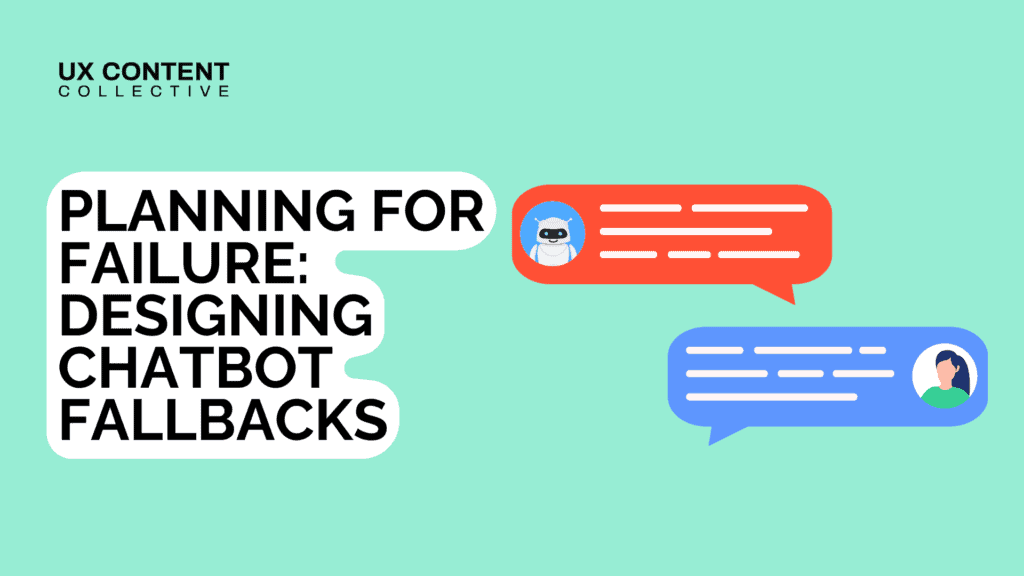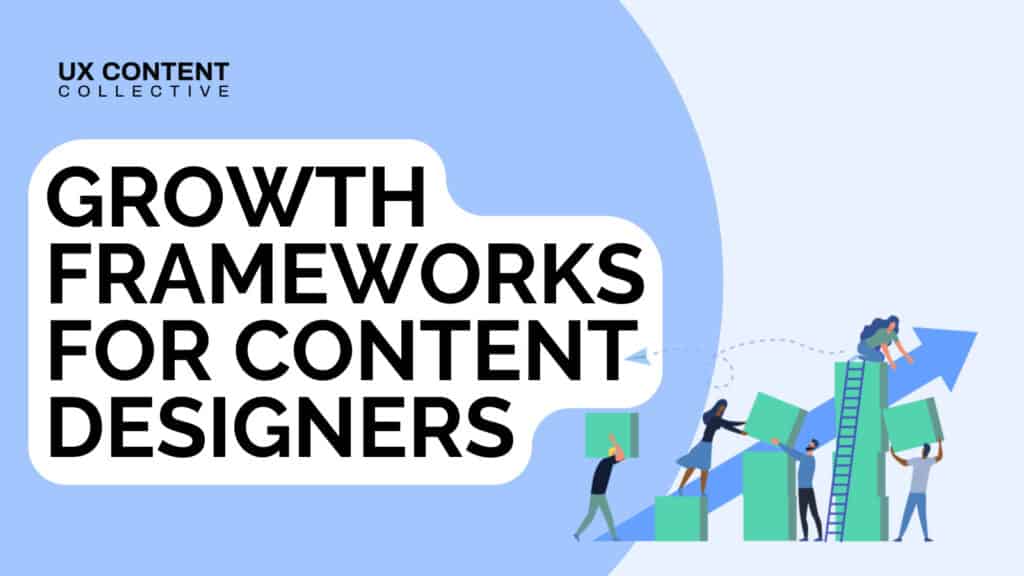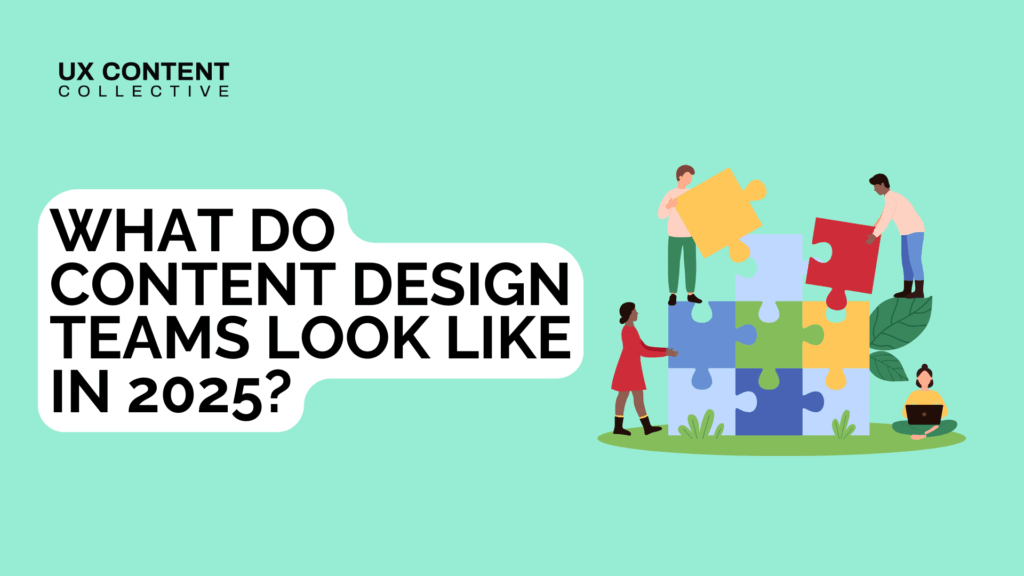

Interested in content design? Check out our complete guide to content design (and how it’s different from UX writing).
When I began leading a 4-person content design team at an Indian fintech with nearly 100 product designers, my colleagues and I found ourselves facing what I call the Strategic Value Gap.
Content designers get stuck reacting to copy requests, leaving no time to proactively shape products. If you’re a content designer, you’re probably nodding along—this cycle of reactive work is a shared experience in our industry.
I think this is due, in part, to a role perception disconnect. While content designers see themselves as strategic partners who can shape product experiences, others often view them as simple writers brought in at the end of the design process.
Without clear job growth frameworks built specifically for content design, this gap only widens. Most teams end up cobbling together growth paths from product design and marketing frameworks, creating a Frankenstein’s monster that fails to capture what we uniquely bring to the table.
This hits content designers hard. In nearly a decade of working in product companies, I’ve seen talented designers struggle in performance reviews, unable to demonstrate their strategic value when all their metrics show is copy delivered and tickets closed. Some begin to doubt their career choice, while others leave for more mature teams, forgoing the excitement of building something from scratch.
Having seen this pattern play out many times, I set out to create a growth framework for my team that would achieve two things: give us a strong sense of direction with a ratified system to back our decisions, and show stakeholders that content design is a serious profession with high standards and clear expectations. Here are my learnings from that process.
Building your job growth framework
Rome wasn’t built in a day, and neither will your job growth framework. To create one that really works for content designers as individuals and as a cohesive team, you first need to understand both your organization’s immediate needs and the broader landscape of content design.
Step 1: Understand your context
Start by having conversations with the right people: design leaders, content designers from established companies, and your own team members.
For example, I spoke to senior content design practitioners in Google and Atlassian to understand: What skills do content designers need to be effective today, and what will they need tomorrow? Don’t just focus on immediate requirements—build for future growth.
Finally, review existing content design job growth frameworks—though there aren’t many public ones just yet, Figma’s is a great starting point.
You’ll soon see strong insights emerge. For example, we were able to tease out what strong craft looked like for content design—writing clear, consistent, on-brand content that serves user needs—but also identified that there was room to develop generalist skills like strategy and stakeholder management.
We also found that the most effective content designers weren’t just good writers; they were able to identify content opportunities early in the product development process and influence design decisions.
With these insights in hand, it was time to start building.
Step 2: Choose your core skills
As you pull together a first draft, hold on to what you appreciate in other frameworks, while adding the bells and whistles that would make it work for your unique context. Think framework rather than ladder—it better reflects the non-linear way content designers typically grow.
Your first challenge will be grouping skills without over-engineering the job growth framework.
Craft naturally comes first: writing clear copy, developing guidelines, and building scalable systems.
Strategy follows: spotting opportunities and shaping product direction. Delivery covers everything from meeting deadlines to managing complex projects with clear prioritization.
Content designers also need strong relationships with product teams, designers, and leadership to be effective. In the words of Rachel McConnell, author of Leading Content Design, “gaining respect for content and having impact doesn’t happen by itself.”
It’s important to bake advocacy and mentorship into your framework, especially considering that these skills often get overlooked in favor of quantitative metrics. Without explicitly acknowledging it, you risk perpetuating the tactical-only perception of content design.
Step 3: Design your levels of progression
As content designers progress, they typically build upward in each skill area. The industry tends to favor ‘levels’, and these levels map to titles that you’ll commonly see: Content Designer, Senior, Lead, Staff, Principal, and sometimes higher titles like Director of Content Design.
Each new level rests firmly on the strength of the skills below it, and you’ll want to make the progression between levels distinct and meaningful.
A Senior Content Designer should be clearly distinguished from a Content Designer in terms of impact and autonomy, just as a Staff Content Designer should demonstrate noticeably more strategic influence than a Senior. Without these clear differentiators, the framework becomes just a set of arbitrary titles. Intercom’s growth framework, for example, clearly defines the key differences between each level.
You might also find that some skills peak at a certain level, and that’s perfectly normal—don’t force it!
For example, a Staff Content Designer might reach their peak in craft skills and grow more strongly in leadership and org building. But instead of letting their craft atrophy, this person must still maintain their mastery in foundational skills.
A Principal Content Designer should still write excellent copy when needed, even though they’re now also shaping org-wide content strategy and building team capabilities.
Career progression isn’t just about time served—it’s about consistently demonstrating the capabilities expected at each stage. For example, to move from Content Designer to Senior, you might need to show that you can independently handle complex projects and mentor others.
The timeline varies—it might take a year, or it might take 3. That’s the beauty of the framework: it allows enough flexibility to grow at your own pace.
What I like most about a well-structured framework is that it creates a spider chart of skills. You can easily spot who’s excelling at their current level, who has room to grow in specific areas, and what that growth looks like.
 Step 4: Refine the details
Step 4: Refine the details
A framework is only as good as its implementation. The key is to make it immediately useful for content designers, their managers, and their non-design stakeholders (in that order).
Something that’s worked for my team is clearly defining behavioral examples for each skill at each level. Take stakeholder management, for example. Here’s what it looks like at our org:
- Junior: “Clearly communicates content decisions with reasoning.”
- Mid-level: “Proactively builds relationships to get content involved in discovery.”
- Senior-level: “Influences product strategy through strong partnerships with leadership.”
Concrete examples help content designers understand exactly what to aim for, and help managers evaluate progress fairly. It answers the essential question: “How do I know I’m doing well, and if I’m ready for the next level?”
Most importantly, clear behavioral examples shift focus from output to impact. Without this specificity, it’s too easy to fall back on counting deliverables: how many notifications written, how many screens reviewed, how many tickets closed. That would drop us right back into the vicious cycle of tactical, reactive work—exactly what we’re trying to break away from.
This is also when you simplify the language. Replace abstract terms like “demonstrates mastery” with concrete actions like “consistently creates.” Cut out buzzwords—they don’t add value and make the framework feel less credible.
Here’s a simple test I use: if you can’t explain a skill level to someone in a casual conversation, it needs simplifying.
Step 5: Test the framework
Now that you have your ready draft, test it with a small group of content designers and stakeholders. I found it helpful to run mock performance reviews with my teammates—it helped me discover which behaviors looked good on paper but were hard to evaluate in practice.
When you’re ready to roll it out to the larger group, you want to land your new job growth framework early in a performance cycle. This gives designers time to get used to it and visualize their work in its context.
In my experience, many companies have vague prompts in their feedback cycles. We countered that by making sure our framework’s expectations were reflected almost exactly in performance review forms.
Content designers could then accurately measure their work against each skill and come away with insights on how to improve. If you’re working in a huge company, you might want to work with the HR and Ops teams to see how existing tools can be customized to your new framework.
Final thoughts
Despite the anxiety of rolling out a new job growth framework, it’s rewarding to see the positive change it can bring almost instantaneously. Some managers I’ve spoken to expressed relief at having actual clarity in growth conversations.
Most importantly, my peers feel enabled by the clear skill buckets, and are more confident in pushing for and prioritizing higher-impact work.
The first version of your framework won’t be perfect, and that’s okay. What matters is that it starts shifting conversations from “how many notifications did you write this quarter?” to “how did your content strategy and practice impact the product?”
The real test will be whether it helps break the cycle of reactive work and gives content designers the backing they need to push for stronger and earlier involvement in the design process. But it’s only uphill from here!
Sindhu Shivaprasad leads Content Design at PhonePe. Connect with Sindhu on LinkedIn.





